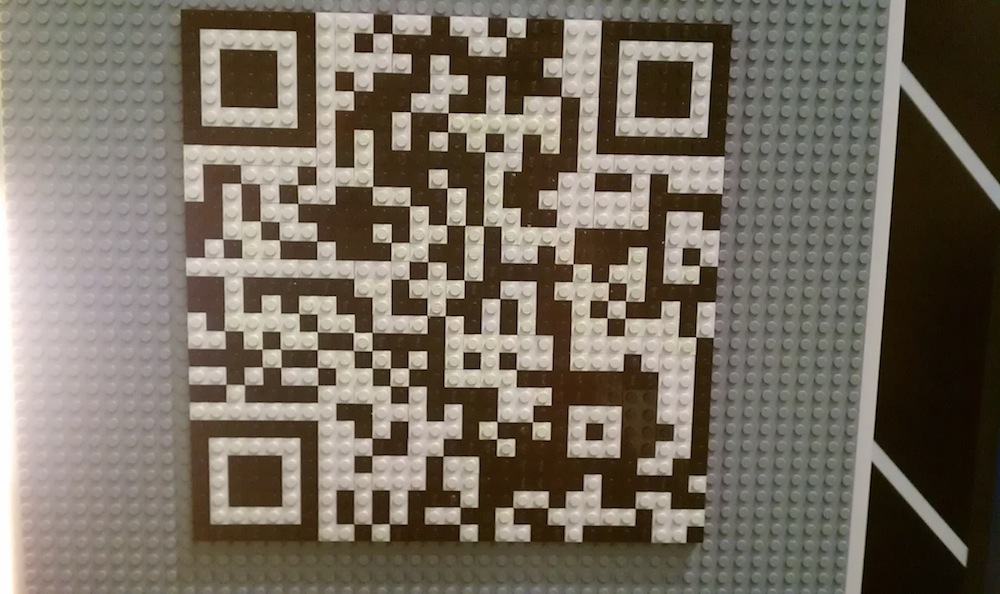 By now, most people know about the epidemic of hunger. Here in the US, 1 out of 5 kids are going to bed without a solid meal — meaning every student you know is sitting next to someone in class who has to ignore the sound of their empty stomach while trying to concentrate on what the teacher is saying.
By now, most people know about the epidemic of hunger. Here in the US, 1 out of 5 kids are going to bed without a solid meal — meaning every student you know is sitting next to someone in class who has to ignore the sound of their empty stomach while trying to concentrate on what the teacher is saying.
Last year the USDA released a map and downloadable dataset of the 6,501 food deserts in America. These are places marked as “low income” and “low access” where at least a fifth of the population lives at or below the poverty line, and there isn’t a supermarket within a one-mile radius (or within a 10-mile radius in rural areas). There is an estimated 13.5 million people, 6.5 million children, nationwide who have little or no access to stores selling healthful food based on correlation with the 2000 census.
Local news coverage of the hunger in Puget Sound is not necessarily void, but you don’t see anyone covering the “hunger” beat like they do business, sports, or entertainment. There are interesting pockets, such as Carol Smith’s story for Investigate West, where she profiled our own backyard food desert along South Seattle’s Duwamish River. Smith found that people are resorting to eating out of the river, despite the government warnings of toxic PCBs, heavy metals, and other contaminants that have resulted in a 5 year lower average life expectancy in the area. Due to a partnership with KUOW to do a radio piece, and features in places like Business Insider, her story brought in a significant traffic spike and increase in Twitter followers. However, it’s important to keep in mind that Carol’s work was only made possible by a health journalism fellowship from the California Endowment out of USC Annenberg, and doing the work she did requires a lot of effort and directed intention.
A vital part of the mission of Journalism that Matters and the Seattle Journalism Commons is to enhance the information needs of our community and help ensure that our important stories are being told. This week our network took a critical first step by holding an all day summit in Issaquah with the aim of creating a “news oasis” that fosters vital information around hunger in Puget sound.
Valuable local stakeholders were present in four key groups:
Community organizers, journalists, researchers, and business modelers
The participants:
Linda Benson, Vice President, Community Initiatives, Hopelink | Karma Ruder, Director of Community Collaboration, Center for Ethical Leadership | Anne Stadler, Independent Civic & Social Organization Professional, Producer, KING TV (ret.) | James Whitfield, President, Leadership Eastside | Jan La Fond, Convener, Redmond Nourishing Network | Marsha Iverson, King County Library System, Public Relations Specialist | Jo Anderson Cavinta — Diversity program coordinator. Outreach Services. King County Library System | Parker Lindner — Freelance @newmediamatters.com | Ann Zavitkovsky — community enthusiast | Carole Carmichael, Assistant Managing Editor, Seattle Times | Mike Fancher, Executive editor, Seattle Times (ret.), co-founder Seattle Journalism Commons, Journalism That Matters board member | Michelle Ferrier, Associate Professor, Elon University, North Carolina, Journalism That Matters board member. Founder of locallygrownnews.com | Sheetal Agarwal, Doctoral student studying political communication and technology, Research Assistant, Instructor at University of Washington, Department of Communication | Cori Benson, UW Bothell, intern with Nourishing Networks. | Jacob Caggiano, digital strategist and co-founder Seattle Journalism Commons | Rae Levine, Rae Levine Consulting, Co-op consultant. Northwest Cooperative Development | Erin MacDougall, Program Manager Healthy Eating and Active Living, Public Health – Seattle & King County | Dave Ortiz, Cascadia Community College | Peggy Holman, Co-founder, Journalism That Matters, co-founder Seattle Journalism Commons
Using conversational practices that support productive self-directed co-mingling, many diverse stakeholders with common goals and interested were introduced and immediately started bubbling with ideas and determination. We were sure to make it known who was absent from the room, mainly those affected by hunger, as well as young people, who were identified as potential leaders that are critical for a movement like this to succeed. It was pointed out that there are still silos that exist where community organizations and non-profits who work directly with the hungry are not interacting enough with the “good food movement” — that is supporters of policies aimed in bringing more local organic food to the dinner table.
Ideas and Examples
It was clear that the best thing we can do is amplify efforts that are already successful, and use those lessons to spawn new ideas that are more likely to succeed. Some existing models mentioned were:
The 10 Percent Campaign — Hosted by North Carolina State University, a campaign to encourage farmers, businesses and communities to pledge to spend 10% of their food budgets locally. Their surveys indicate they have 4516 people and 500 businesses who have spent $12,248,980 locally since they began.
South Whidbey — Strong community networks like The Whidbey Institute, South Whidbey Commons, South Whidbey Tilth, and an upcoming Thriving Communities conference are alive and well in that part of the region.
The Seattle Happiness Initiative — a project of Sustainable Seattle, inspired by Gross National Happiness index used in Bhutan, and the desire to base economic decisions on not just GDP, but overall well-being. The SHI has been endorsed by The Seattle City Council and is now spreading nationally at happycounts.org.
New ideas that we could experiment with:
Mobile News Oasis — We were lucky to have Jo Anderson Cavinta, the Diversity Program coordinator for King County Library Systems attend a session and talk about their new mobile library vans that will deliver free computer access to areas in need. Why not take advantage of the parking lot space at churches and food banks and bring computer access to where people who need them are getting their meals? There could also be a student or community reporter on site that conducts interviews / training / publishing on the spot, as well as nutrition advice, snacking tips etc. At the Greensboro Create or Die 2 Unconference, Journalism that Matters helped incubate the Wake Up Tour, a bio-diesel powered van which provides on the ground mobile media literacy training.
Food Moving Technology — During the 3rd Random Hacks of Kindness there were teams who set out to make apps that allow establishments who throw out food to put out a call for pickup instead. Three groups started a prototype, Bring the Food, Moving Food (Seattle based), and FoodMovr. I’m hoping there’s potential in jumpstarting this back up again, with the help of organizations like Nourishing Networks who can adopt it in their workflow. It appears Bring the Food is the furthest along on development while the other two haven’t shown much activity since June, but maybe that can change with a few emails 🙂
SeedBombs — This came from Michelle Ferrier who was visiting us from North Carolina’s research triangle. Her locallygrownnews.com startup has a guerrilla marketing tactic of placing little plantable mud balls with seeds in them that are wrapped with business cards that advertise her “locally grown news” site. The idea of packaging food and leaving it for others to enjoy as a random act of kindness kind of rings a similar tune to the Ben’s Bells project. You could weave a community narrative together by leaving a number code that publishes a tweet or blog post via text message from the random food package recipient.
No Rooftop Left Behind — I brought up my frustration that so many rooftops are being underutilized as potential gardens or places to install solar panels, and feel there should be a campaign to make use of every naked rooftop in the country.
Stockbox Outreach — A team of business leaders are trying to tackle the the food desert situation by starting up a chain of “mini mini marts” that serve fresh food out of empty shipping containers. Stockbox Grocers raised over $20,000 on Kickstarter to prototype a popup store in Deldridge, which was open September – November 2011. They are now working to launch a permanent store in Spring 2012, and it would be great to load up and disseminate good information as well as good food.
Challenges and opportunities
Some folks in the room wanted to see more work done reporting and addressing underlying policy issues that affect the state of hunger (food prices, tariffs, corporate farm subsidies, etc.) as well as the quality of food available to those in need (healthy, organic, local), and ensuring the support of sustainable farming practices into the future. There are also questions of structural bias when you have large agricultural giants (i.e. The ConAgra Foods Foundation) contributing to programs like Feeding America.
This led to two key discussions: 1. When you’re hungry, your first order of business is to eat, and that is the priority. 2. Focusing too much on policy and pointy headed experts alienates people and makes them feel less welcome or able to participate in the movement. As noted by James Whitfield of Leadership Eastside, “It’s really really big, and also really really small” and it’s important to focus on the emotional stories while also keeping sight on the broader overlapping issues.
Another interesting challenge is coming up with strategies to address cultural barriers, not just structural ones. A survey in Redmond was mentioned where police found that teens would rather be arrested for stealing than face the stigma of admitting reliance on social services to get by. Many people who actually qualify for food assistance don’t even use it because of the shame that comes with it. To overcome this, it was suggested that the news oasis we are trying to build is one which transforms the community story (narrative) about food and hunger from consuming & unequal distribution (lack) to the gift exchanges happening in:
• the food system
• human capacity building initiatives for change that are linked to needed policy changes
• the evolution of community interdependence
Commitments and future development
The day ended with positive aspirations and each person writing down a single commitment to take back and start working on. On the support side, Nourishing Networks (@nourishnetworks) has launched several community chapters and is enthusiastic about bringing in more entrepreneurs into the scene. On the policy side, Erin MacDougall, was there on behalf of the Healthy Eating and Active Living Program for Seattle & King County, and is quite passionate about taking on the systemic challenges that lead to difficulty accessing good healthy food. Our agreed focus for the news oasis is to connect community and journalists around issues of community need/civic importance to:
• Tell stories that matter because they link to felt need in community.
• Support community members to tell their own stories (create, disseminate and use their own stories) and link them to the “big” stories about the whole system.
• Reach out to professional journalists to ampl
 By now, most people know about the epidemic of hunger. Here in the US,
By now, most people know about the epidemic of hunger. Here in the US, 

 via ONA-SPJ group on Meetup.com
via ONA-SPJ group on Meetup.com
